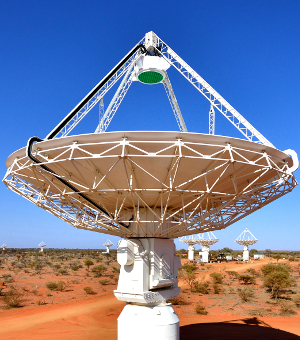ASKAP scopes SCORPIO
 One of Australia's most advanced telescopes has taken a first glimpse at the Galactic Plane.
One of Australia's most advanced telescopes has taken a first glimpse at the Galactic Plane.
Researchers have reported the first radio observations toward the Galactic Plane using the Australian SKA Pathfinder (ASKAP), developed and managed by CSIRO.
The region mapped includes the entire area of the Stellar Continuum Originating from Radio Physics In Ourgalaxy (SCORPIO) survey, one of the exploration projects of the Evolutionary Map of the Universe (EMU) program, which will use the new ASKAP telescope to make a census of radio sources of the whole southern hemisphere.
Astronomers pointed the ASKAP's antennas in the direction of the Scorpion's tail. At the time observations were carried out, the interferometer was not yet fully deployed (only 15 of the 36 antennas were operational), and these were used to image an area of about 40 square degrees.
The team was able to measure more than 3,600 compact radio sources in the SCORPIO field, many of which are unclassified, as well as detecting all the previous sources classified as HII regions or planetary nebulae.
Experts say ASKAP makes it possible to reveal many sources once referred to as radio-quiet and discover numerous extended, unclassified sources belonging to the class of "galactic bubbles” constituting a new sample for identifying supernova remnants.
The leader of the EMU project, Andrew Hopkins of Macquarie University, explains: “Even data taken at that early stage in the commissioning of ASKAP demonstrates its excellent sensitivity to extended radio emission”.
“This is critical in enabling the detection of these important structures in the Milky Way, enabling new insights into the formation and evolution of its stars.”
The observations of the Galactic Plane as part of the EMU survey, and later with the SKA project, will allow researchers to explore a whole series of astrophysical processes, with a very high probability of discovering new classes of objects.







 Print
Print